What Food Should We Give Our Dogs?
Providing our best friends with regular, nutritious meals is one of our crucial duties as a dog owner.
And mealtime can be one of the best times of the day for your best friend. Particularly if you have a food hound (did we hear someone say, Labrador Retriever?).
But the world of dog food can be big and confusing. There are so many choices out there, how do you know which is the best food to feed your pup? And what foods shouldn’t they get?
In this handy feeding guide, we have tried to give you all the information you need, without any of the confusion!

The Basics
Just like humans, our canine companions need a certain combination of protein, carbohydrates, fats, vitamins, minerals, and water every day to function normally.
Good nutrition helps your dog to maintain muscle tone, build, and repair muscles, teeth, and bones, run and play with ease and fight-off infection.
The Good Stuff – What to Feed Your Dog
Domesticated dogs are largely carnivores, but they will also eat plant-based foods.
A good starting point for your feeding plan is to look for a high quality premium commercial dog food that is appropriate for your pup’s life stage (puppy, adolescent, adult, pregnant, senior) and health status (for example if they are overweight, have allergies or diabetes).
We cover more on choosing a good commercial dog food later.
To provide some variety, you can also add some natural foods to their kibble, or as an alternative to some meals to provide variety.
Natural foods include fresh human-grade raw meat (e.g. raw lamb), raw meaty bones and finely cut, cooked vegetables.
You can give your dog fish as a treat. Tinned fish such as tuna, sardines, and salmon can be great as an occasional meal but make sure the fish is canned in spring water rather than brine or oil.
Some people like to make up their own homemade stew to add to their dog’s food, including a mix of cooked meat (such as boiled chicken or turkey mince), small amounts of plain cooked pasta and cooked vegetables such as pumpkin, green beans and carrots.
These types of stew can be a healthy and tasty addition to your dog’s meal but leave out any onion or garlic-based sauces or any of the other products in our toxic and dangerous list below.
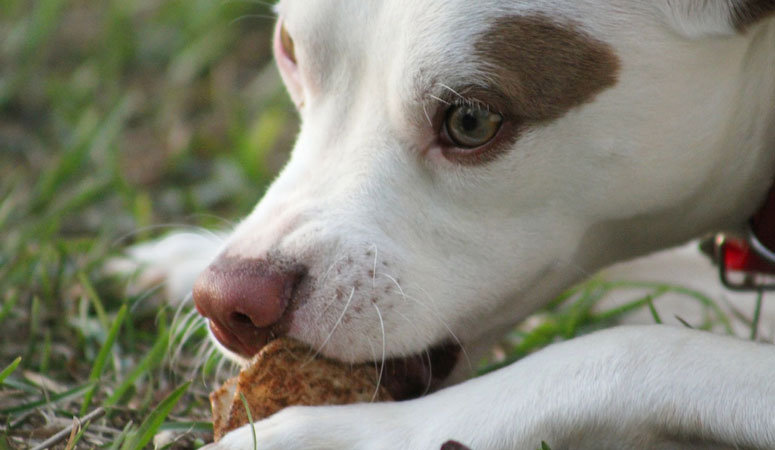
No bones about it – some bones can be good for your dog
We all know that dogs love bones! But are they good for them and what type of bones are best?
Raw meaty bones are great for helping keep your dog’s teeth and gums healthy. Generally, one to two bones a week is sufficient to help remove plaque from teeth. But more than this may lead to constipation.
When feeding bones to your dog, here are a few important tips to remember:
- NEVER feed your dog cooked bones or bones that can easily splinter (like those in cutlets or chops). Sharp splintered bones can cause potentially fatal internal damage or intestinal obstruction.
- Bones should always be fed raw. The bones should be large enough that your dog can’t fit it in their mouth whole. Raw lamb ribs and raw lamb flaps are good choices.
- To reduce the risk of your dog cracking their teeth while chewing, avoid large marrow bones including ones that the butcher has sawn lengthwise, T-bones, ‘chop’ bones, and large knuckle bones.
- Dogs can sometimes become over-protective when they are eating a bone. Discourage young children and other dogs from approaching any dog with a bone.
- Always supervise your dog when they are eating bones so you can monitor them for choking or any other issues.
- If your dog is older or has problems with their teeth and jaws, you should check with your vet first whether it is OK to feed them raw meaty bones.
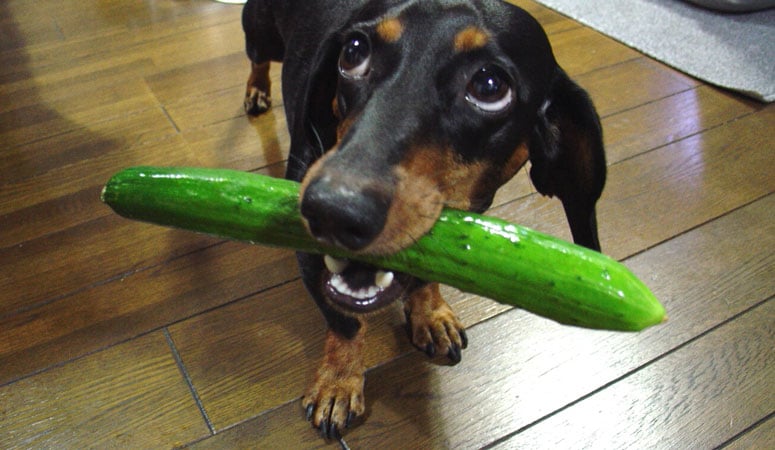
Grass-fed dogs
Don’t worry if your dog likes to occasionally graze on grass. This is normal behavior and dogs will sometimes eat grass as an additional source of vegetable matter and micronutrients.
If you can, make sure your dog isn’t eating chemically treated grass or toxic plants.
Raw food diets
Some people believe that dogs should be fed a raw food diet – on the grounds that it is healthier than commercially processed food and resembles more closely what their wild ancestors would have eaten.
A raw food diet can be good but can also be very tricky to get right.
Raw dog food is available commercially, usually as frozen patties that can be thawed prior to feeding. Or you can make your own at home.
If you are interested in feeding raw, there are a couple of important things to remember:
- With both homemade and commercial raw dog food diets, you will need to put a bit more effort in to make sure your pup is getting a complete and nutritionally balanced meal (for example by adding in supplements, good fats, superfoods, wholegrains etc).
- Your pooch can get a terrible tummy ache if you mix a raw diet with cooked treats, so never mix the two.
- Be super vigilant with your personal and kitchen hygiene as there is a risk of bacterial contamination (like Salmonella and E. coli) when serving raw meat and raw meat-based products. While these types of bacteria can make our pups feel ill, the bigger risk is for anyone who is young, old, pregnant, or immunosuppressed (e.g. undergoing chemotherapy) and shares a home with a dog on a raw food diet.
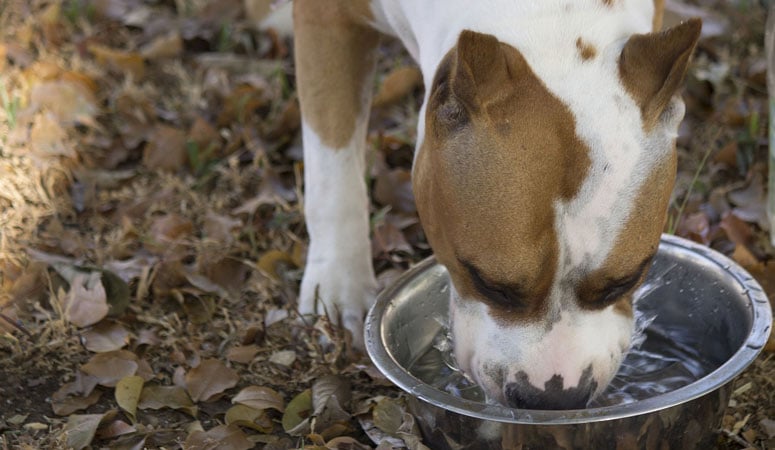
The Nasty Stuff – Foods and Substances You Should Never Feed Your Dog
Toxic Foods and Substances
Never feed your dog any of the following foods or substances:
- alcohol
- avocado
- bread dough and yeast dough
- chocolate
- coconut milk and fresh coconut
- coffee or caffeine products
- fruit stones or ‘pits’ (e.g. mango seeds, apricot stones, avocado stones)
- garlic
- grapes, currants, raisins & sultanas (including in fruit cakes)
- moldy or spoiled foods or compost
- mushrooms
- nuts
- xylitol and other artificial sweeteners.
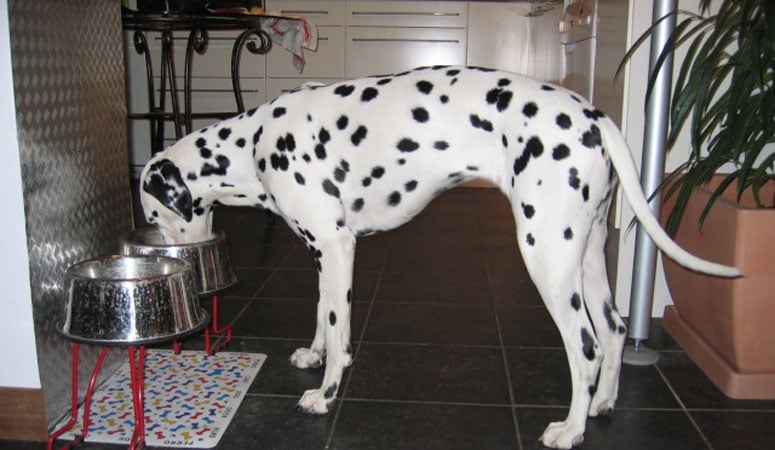
Dangerous Foods for Dogs
Avoid these foods that are dangerous (and potentially fatal)
- citrus foods and citric acid
- cooked bones and small pieces of raw bone
- corn cobs
- fatty trimmings and fatty foods
- green unripe tomatoes
- roughly cut vegetables
- salt (some salt is essential in your dog’s diet but too much is unhealthy and can be dangerous for dogs with chronic disease such as kidney, liver, and heart problems).
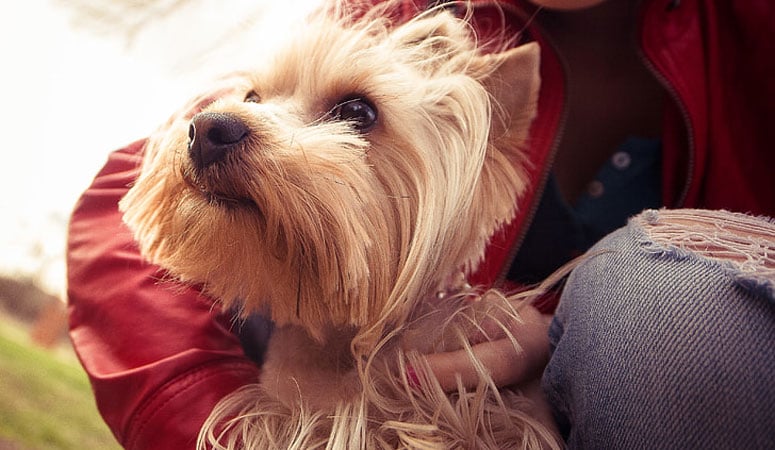
Other Things to Avoid
Thiamine (Vitamin B1) deficiency can occur when dogs eat food that contains sulphite preservatives. Thiamine deficiency causes severe neurological symptoms and can be fatal.
- You should avoid sausages, sausage meat and cooked manufactured meats as they can contain sulphite preservatives.
And some raw meat products marketed as pet food (pet meat/pet mince/pet rolls and bone products) contain sulphite preservatives to keep them looking fresh.
- If you need to feed these to your pup for convenience, carefully check the label first and only use quality, natural and preservative free products.
Some dogs may be lactose intolerant and experience stomach upsets like vomiting or diarrhoea if they are given milk and milk products. If your dog has this problem, it’s best to avoid milk and products with lactose.
Also ensure your pup doesn’t eat the string wrappings around rolled roasts or absorbent pads found on trays under meat.
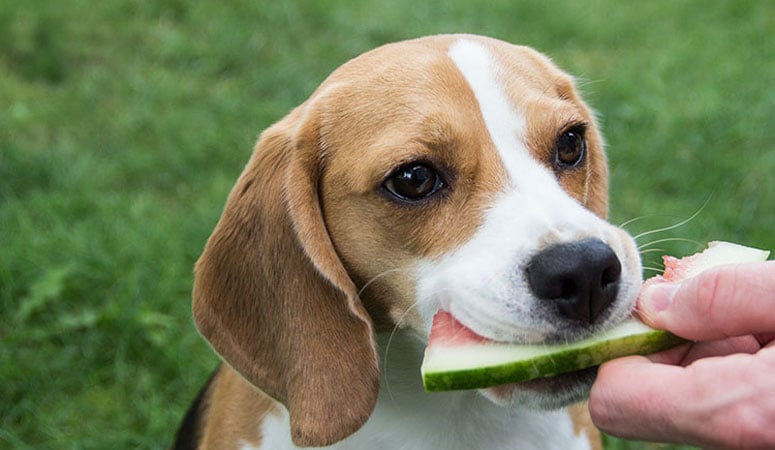
Choosing a Quality Commercial Dog Food
OK, so there are hundreds of different varieties of commercial dog food out there.
And when you look at the packaging, some look pretty darn good with their pictures of happy dogs with shiny coats on the bag and promises of food that is ‘balanced’, ‘healthy’ and ‘nutritious.’ Surely these are good enough to feed your best friend.
Sadly, this is where we must give you some bad news.
Dog food is a big industry.
And many of the products you find on supermarket shelves are packed full of unhealthy ingredients and fillers that are extremely low in nutritional value as well as artificial additives and preservatives that can be downright dangerous to your dog’s health.
But just as there are lots of low-quality products out there, there is a growing range of fantastic, high-quality commercial kibble brands. These products are from manufacturers that have worked hard to formulate recipes that provide everything your dog needs daily – and nothing that they don’t.
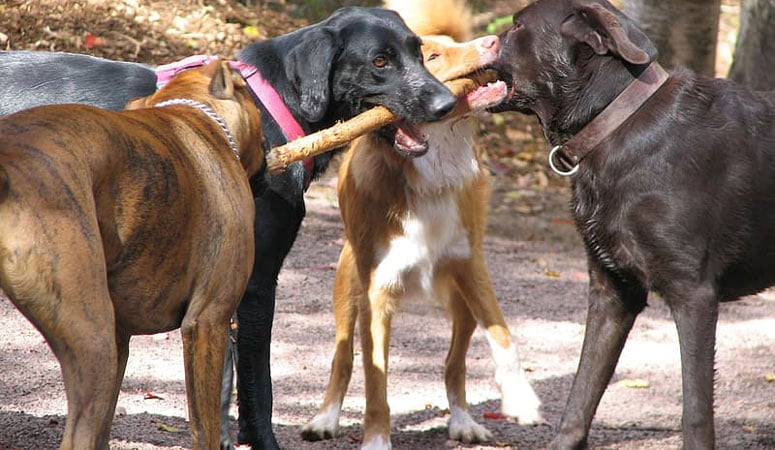
How Do You Tell the Difference?
The first thing to do is to ignore the front of the bag and go straight to the ingredients list on the back. If you see any of these words, put the bag down and walk away!
Gluten (wheat), corn syrup, soy, meat meal or bone meal, meat by-products, animal digest, ethoxyquin, BHA/BHT, cellulose, artificial colors (usually written as things like Red 40, Yellow 5, Blue 2), artificial flavors, propylene glycol, sodium, sulphite preservatives.
In contrast, the good commercial products will have ingredients like:
Single source animal protein and grain-free kibble enriched with superfoods such as molasses, faba beans, flaxseed, kelp powder, alfalfa, lentils, chia seeds, yucca, chicory root, kelp, green tea, sweet potato, carrot, broccoli, and blueberries.
These super foods make great additions to your dog’s diet as they help your dog maintain good health, fight disease, and improve their energy.
When choosing a commercial food, look for one that:
- is enhanced with vitamins, minerals, natural prebiotics, and amino acids
- uses premium ingredients that are not genetically modified
- is free from artificial flavors, colors, and preservatives.
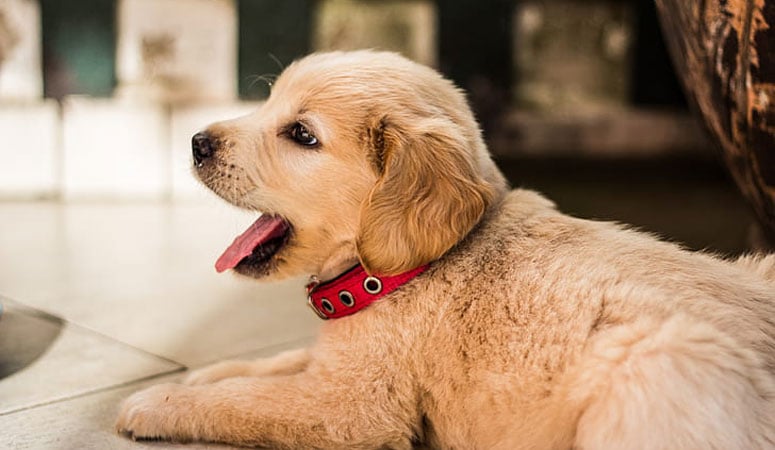
How Does Feeding Change Over Our Dog’s Life?
Just like humans, your dog needs different food as it makes the journey from playful pup to distinguished senior.
All quality commercial dog foods will offer kibble that is specifically designed to meet the different nutritional needs for each stage of life (puppy, adult, and seniors) and for small, medium, and large breeds.
We have prepared some separate articles that specifically deal with feeding puppies and senior dogs – which you can find here:
But if you want a quick snapshot, keep reading now.
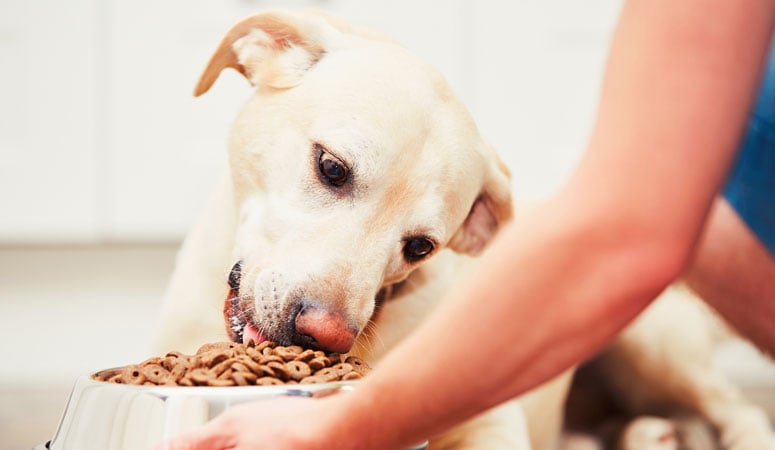
The Influence of Feeding on Puppies
If you are bringing home a new puppy from a breeder (usually at 8–10 weeks old), you will need to be ready to feed them 3–4 times per day, until they are about six months old.
If you can, start them off on the same food as they have been eating. If you want to transition away from the breeder’s food, you should do this slowly to avoid causing any digestive problems (see our guide on how to transition your dog’s food later in this article).
It is important to feed them formulas that are meant specifically for puppies as adult dog food does not contain enough nutrients.
When feeding pups try to avoid overfeeding as this will help minimize the risk of growth-related problems later in life. And it doesn’t matter how cute they are, don’t feed them scraps from the table or you will be setting yourself up for a lifetime of begging behavior!

The Influence of Feeding on Adult Dogs
Adult dogs need different levels of nutrients depending on their size, weight, and activity levels. One of your goals is to make sure they are getting enough nutrition to keep them healthy and happy, while preventing excessive weight gain.
Depending on their breed, dogs can be switched onto adult food at different ages.
There aren’t any hard rules about the best time for every dog to switch from puppy food to adult dog food. But as a guide, when puppies reach 75-85 percent of their adult size, their growth rate begins to slow, and they are likely to be ready to switch to adult dog food.
This happens at different ages depending on your dog’s breed and anticipated size:
- Toy, teacup, and tiny breeds (under 10-12 pounds when grown) – 6-7 months old
- Small dog breeds (up to 20-25 pounds when mature) – 9-11 months old
- Medium dog breeds (25-50 pounds adult weight) – 12-14 months old
- Large dog breeds (50-75 pounds when grown) – 15-18 months old
- Giant dog breeds (80+ pounds when grown) – 18-24 months old.
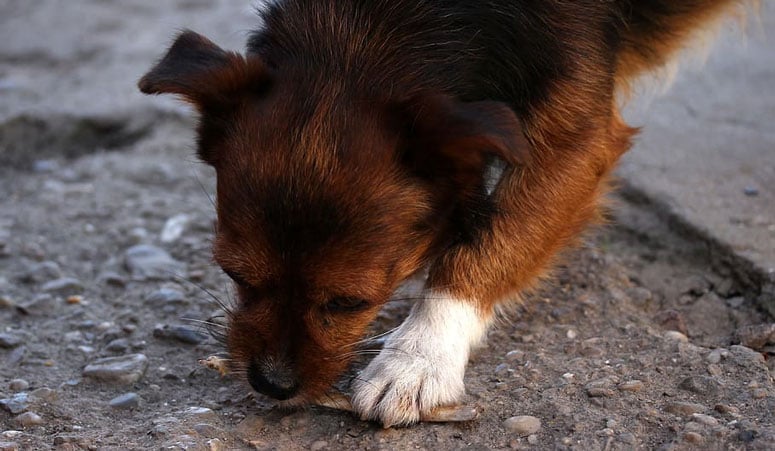
You should also consider your dog’s activity and energy levels when thinking about making the switch to adult formula food.
More active and energetic dogs may benefit from the extra energy of puppy food to meet their needs until they are closer to their adult size, while more sedentary dogs could be ready to switch to adult food sooner.
If your dog is eating the right amount of quality food with plenty of meat, and getting sufficient exercise, they should remain in a suitable weight category. If the pounds are starting to creep on, you might need to look at upping their activity levels, cutting back on treats or switching to a food that is specifically formulated for overweight dogs.
You can check daily how well your dog’s nutritional requirements are being met by looking at how solid their poop is and monitoring their appetite and overall approach to food.
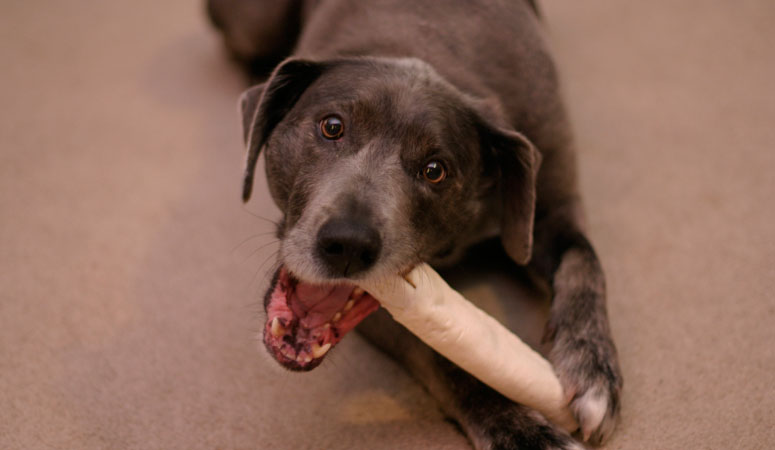
The Influence of Feeding on Aging Dogs
Dogs over 8 years of age are usually considered to be aging dogs. In large and giant breeds, the aging process can begin earlier.
When dogs start to age, you will probably see a mild decrease in their activity levels and should take this into consideration when planning how much food to give.
Older dogs can sometimes benefit from increasing the number of meals they get each day, while reducing the amount of food provided in each meal.
As your best friend ages, you might need to consider increasing the amount of fiber in their food (without sacrificing protein), adding supplements that specifically help with joint mobility (things like glucosamine, chondroitin & green-lipped mussel), and making sure your dog has regular bones or treats to chew that can help slow down the build-up of tartar.

How to Change Your Dog’s Food
Any time you decide to change your dog’s food, it is important that you transition to the new diet over a period of around 5-7 days. This will give your dog’s system time to adjust to the change and reduce gastrointestinal issues that can occur with sudden changes in diet – like vomiting, diarrhea, and a decreased appetite.
During the transition period, you slowly add more and more of the new food while also gradually reducing their current food.
A good diet transition could look like this:
Day 1: 25% new diet and 75% old diet.
Day 3: 50% new diet and 50% old diet.
Day 5: 75% new diet and 25% old diet.
Day 7: 100% new diet.
As you transition, keep monitoring your dog’s response. If, at any point you see vomiting, diarrhea, or a loss of appetite, you might need to slow things down even more.
If you have transitioned gradually and your dog is still experiencing stomach upset, talk to your vet.
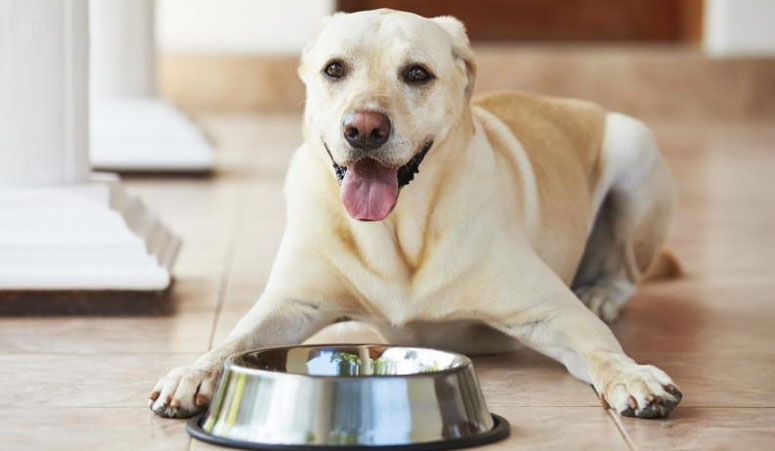
A Final Note
Over their lifetime, your dog might experience eating problems, allergies, or other health issues such as gastrointestinal upset, obesity, diarrhea, and kidney disease.
If you are worried about any of these issues, check out our article on the causes of common feeding problems in dogs and what to do about them here:
Common Feeding Problems and What to Do About Them
But, for most dogs, if you follow the guidelines above, you can be sure your dog will stay healthy, happy, sleep well, and have lots of energy for play and exercise.

